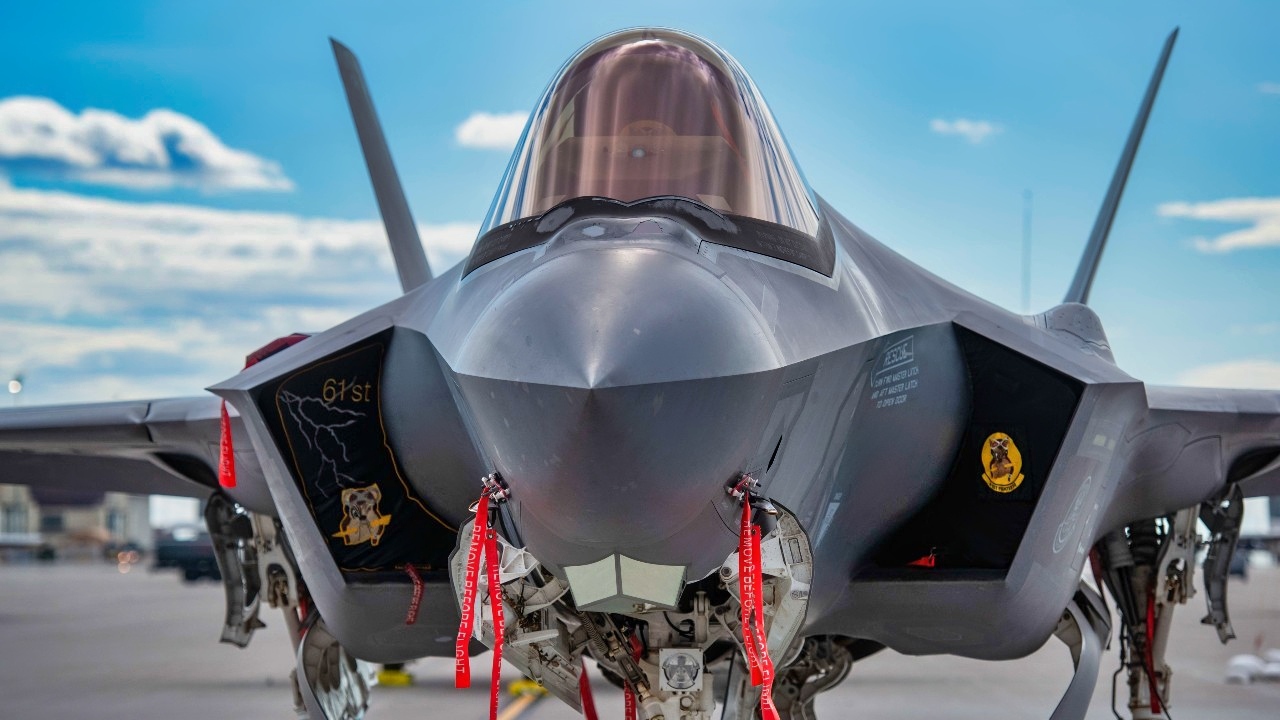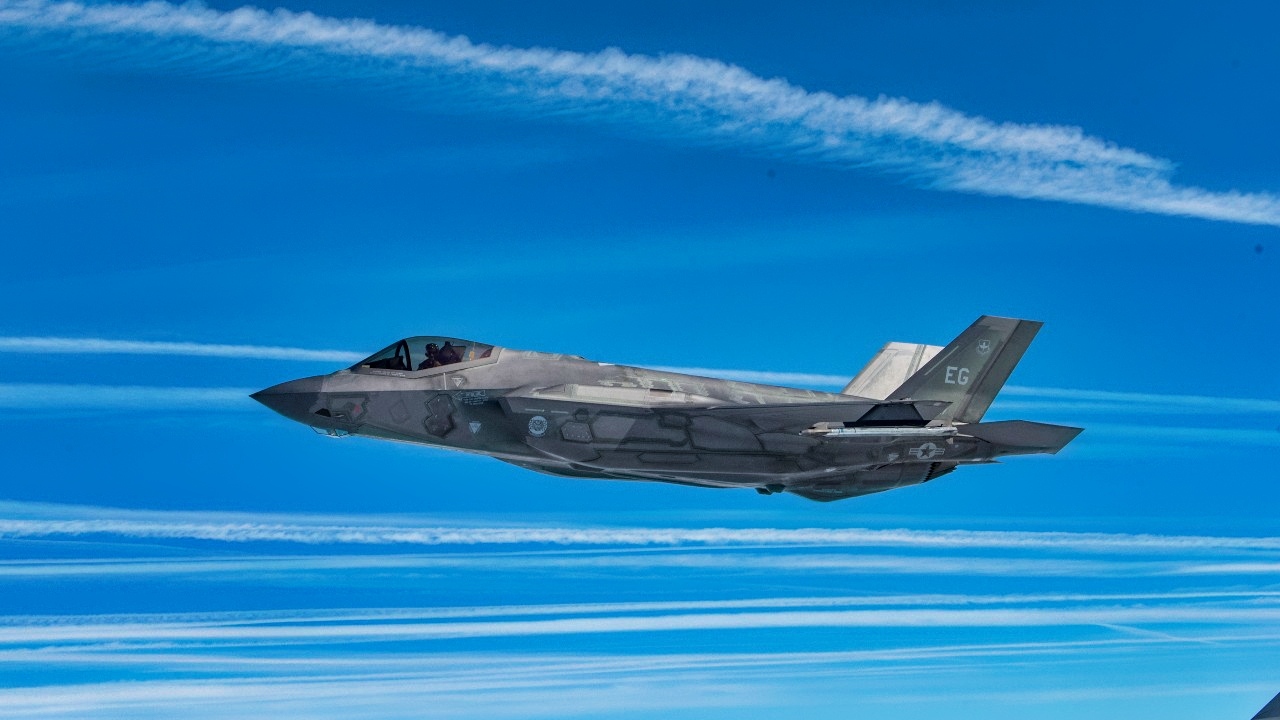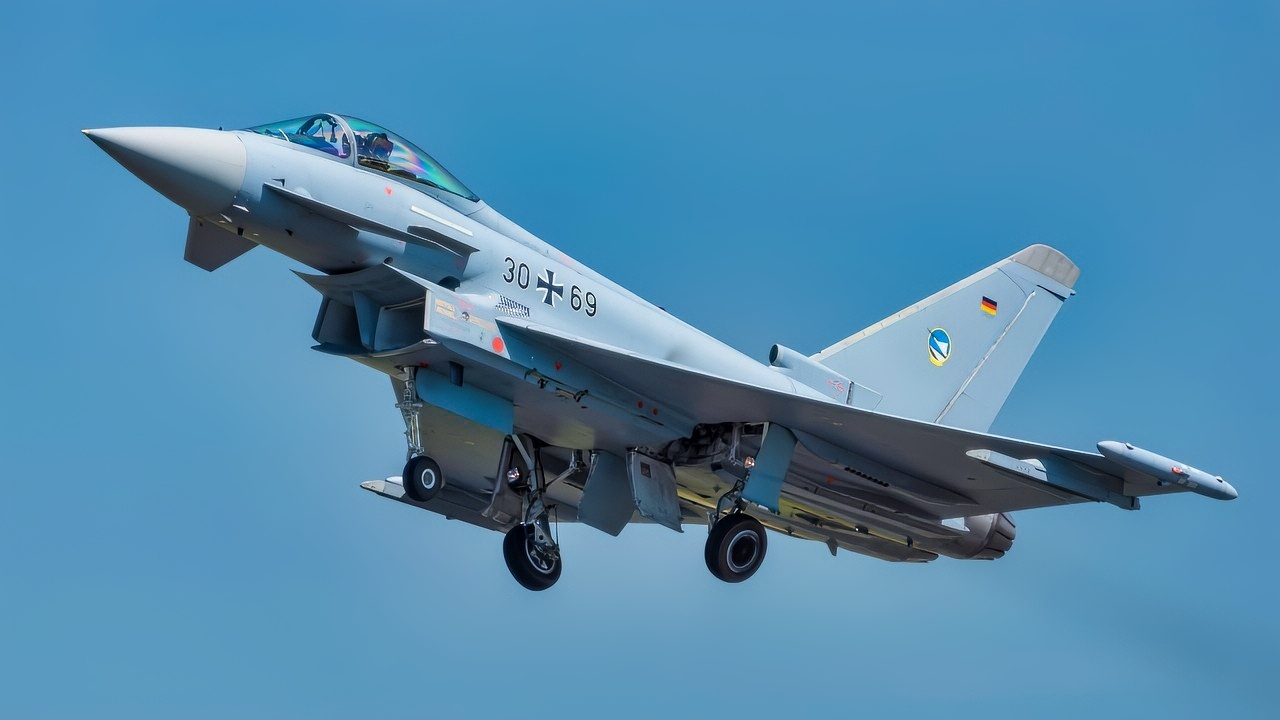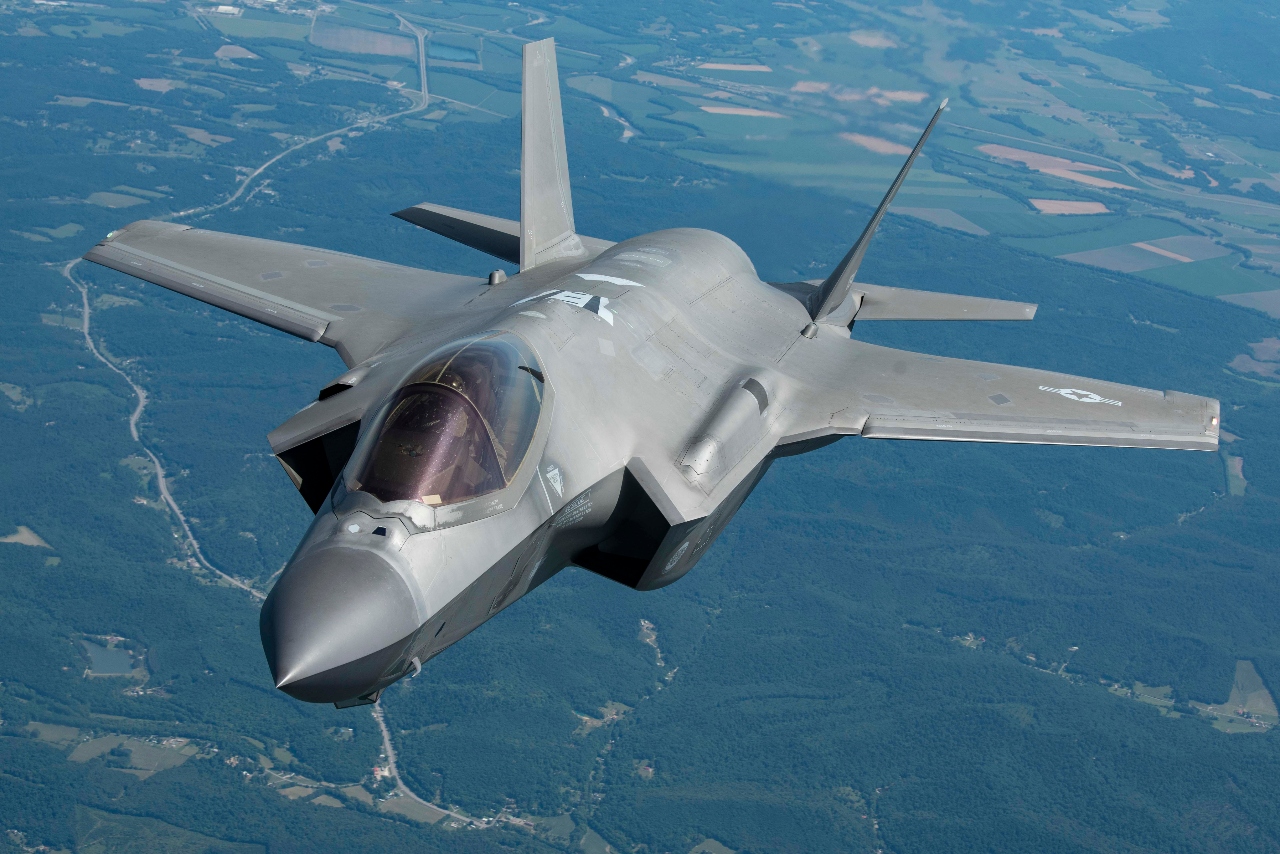Key Points and Summary: Amid growing transatlantic tensions, Spain has cancelled its F-35 fighter deal, and Switzerland could soon follow.
Double Trouble: Switzerland balked after the U.S. demanded a significant price increase on what the Swiss believed was a fixed-price contract.

A U.S. Air Force F-35A Lightning II prepares for takeoff at Mountain Home Air Force Base, Idaho, September 22, 2022. The F-35 squadron from Luke Air Force Base, AZ used Mountain Home AFB for the terrain and airspace in order to practice simulated combat scenarios. (U.S. Air Force photo by Senior Airman Cheyenne Bassham)
-Spain’s cancellation was more strategic, citing a new commitment to “European defense autonomy” and opting to invest in the Eurofighter Typhoon and the future FCAS program instead.
-Both decisions reflect a broader European pivot away from reliance on U.S. defense platforms, fueled by President Trump’s foreign policy and demands on NATO allies.
The F-35 Problem No One Saw Coming
The F-35 is widely regarded as one of the most technologically sophisticated fighter jets currently in service.
It has been a domestic and commercial success, with more than 1,000 units produced and sold worldwide.
Unfortunately, as a product of the U.S., the F-35 is subject to the inconsistent and unpredictable geopolitical tides.
Ever since President Trump assumed office for his second term, relations between America and Europe have been on edge.
This has had the side effect of causing many European nations to reconsider the F-35 as a viable option and look to domestic European fighter jets.
Most recently, both Spain and Switzerland have canceled their orders on the F-35 and are now pursuing other options.
Why Switzerland Could Dump the F-35
In 2022, Switzerland signed a deal to purchase 36 F-35A jets under the U.S. Foreign Military Sales (FMS) framework. The agreement was presented as a fixed-price contract worth 6.035 billion Swiss francs, which was approximately $6.25 billion at the time. However, by mid-2025, the U.S. government informed Swiss authorities that the contract terms allowed for price adjustments based on production costs.
This led to a demand for an additional CHF 650 million to CHF 1.3 billion, citing inflation, rising raw material costs, and energy prices. Swiss officials contested this interpretation, arguing that the deal was legally binding at the agreed fixed price. Legal opinions from both Swiss and American law firms supported Switzerland’s stance, but the U.S. Department of Defense maintained that pricing under the FMS framework is based on the cost of the production lot in which the aircraft are built, not a fixed total.

U.S. Air Force F-35 Lightening II with Eglin Air Force Base, Florida flies off the wing of a KC-135 Stratotanker with MacDill Air Force Base, Florida on December 16, 2021. The F-35 is the U.S. Air Force’s fifth-generation fighter and will replace the F-16 Fighting Falcon and the A-10 Thunderbolt II. (U.S. Air Force photo by Staff Sgt. Tiffany A. Emery)
This disagreement triggered a political storm in Switzerland. The procurement had already been controversial, narrowly approved by referendum in 2020 with just 50.1% support. The selection of the F-35 over European alternatives, such as the Rafale and Eurofighter Typhoon, had sparked protests and a failed second referendum attempt.
The dispute over pricing added fuel to the fire, with critics arguing that the government had misled the public about the cost and terms of the deal.
Further complicating matters was a 39% tariff imposed by the U.S. on certain Swiss exports, including luxury goods like watches and coffee capsules. While Swiss officials insisted the F-35 pricing dispute was unrelated to the tariffs, public perception linked the two issues, fueling calls to cancel or reduce the order.
The Swiss government responded by ordering a comprehensive review of the F-35 program. Options under consideration include reducing the number of jets or switching to a different aircraft, though the latter is seen as costly and time-consuming.
Canceling the deal entirely could leave Switzerland without a modern air defense capability after 2032, when its aging F/A-18 Hornets are set to retire.
Spain Follows Suit
Several months after Switzerland bailed on the F-35, Spain decided to cancel its F-35 deal with the U.S., but for slightly different reasons.
The country had long considered the F-35 as a replacement for its AV-8B Harrier II (used by the Navy) and EF-18 Hornet (used by the Air Force). In 2023, the Spanish government allocated €6.25 billion for a potential purchase of 45–50 F-35As and 12–15 F-35Bs. However, by August 2025, Spain officially ended all talks with the U.S. and Lockheed Martin, citing a shift in defense priorities.
The primary reason for Spain’s withdrawal was its commitment to European defense autonomy. Under a €10.471 billion defense plan, 85% of funds must be invested in European programs. The U.S.-built F-35 did not meet this requirement.

German Air Force Eurofighter Typhoon. Image Credit: Creative Commons.
Instead, Spain chose to invest in the Eurofighter Typhoon and the Future Combat Air System (FCAS), a sixth-generation fighter project developed in partnership with France and Germany. The Typhoon is already in service with the Spanish Air Force, and Spain has ordered additional units under the Halcón II program.
Spanish officials also expressed concerns over restricted access to the F-35’s critical systems and software, which would limit national control and prevent integration of domestic technologies. This issue of sovereignty is a recurring theme in European defense debates, especially with the F-35’s reliance on U.S.-controlled logistics and software updates.
The cost of building and maintaining the infrastructure required to support the F-35, along with a unilateral price increase, further discouraged the acquisition.
Spain’s Ministry of Defense concluded that the long-term costs and strategic limitations outweighed the benefits of acquiring the only fifth-generation fighter currently available.
Europe Pivots Away from America
However, beneath everything else, the decision to back out of the F-35 deal was ultimately a political one. Prime Minister Pedro Sánchez resisted NATO’s push for members to spend 5% of GDP on defense, calling it “unreasonable.”
He emphasized that “only Europe will know how to protect Europe,” signaling a clear pivot toward European defense independence.
Spain’s case is one of many recent instances of European nations shifting their focus toward continental European systems, particularly amid renewed tensions under President Donald Trump’s foreign policy.
Trump’s demands for higher NATO spending and his imposition of tariffs on European goods have fueled skepticism about relying on U.S. defense platforms.
While Switzerland’s concerns are primarily financial and legal, Spain’s decision is more strategic and ideological. Switzerland is still weighing its options, with the possibility of reducing the number of jets or switching to a different aircraft.
Spain, on the other hand, has officially ended talks and committed to European alternatives. Both cases underscore the challenges of multinational defense procurement in an era of shifting alliances, economic uncertainty, and rising geopolitical tensions.
About the Author:
Isaac Seitz, a Defense Columnist, graduated from Patrick Henry College’s Strategic Intelligence and National Security program. He has also studied Russian at Middlebury Language Schools and has worked as an intelligence Analyst in the private sector.
Military Affairs
China’s Stealth Air Force Has 1 Mission










